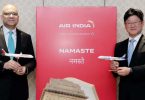UBON RATCHATHANI, Thailand (eTN) — Buddhist Lent is a religious festival, which takes place all across Thailand but has a more significant meaning in Isan, the Kingdom’s northeastern region. With monsoon rains starting, the festival marks the beginning of the Buddhist “rain retreat” where Buddhist monks remain within the temple grounds. The retreat starts from the first day of the waning moon during the eighth lunar month (July) to the fifteenth day of the waning moon during the eleventh lunar month (October).
According to legend, monks’ confinement during this three-month period was ordered by Buddha, as monks making merit destroyed at the same time growing rice crops in the fields. In return, Thai people made offerings to confined monks of food and clothing. The offering included candles to provide light for reading and praying monks and also because candles are a symbol of wisdom.
Presenting candles to monks did not include a parade and candle contest until Rama V time, when Prince Sappasittiprasong, by then governor of Ubon Ratchathani, decided to replace a dangerous rocket festival with this candle festival, where communities competed with each other to present the most elaborate candle sculptures at temples. The festival was born, and its tradition has lasted until today, with two days of festivities including colorful parades to present the floats.
The elaboration of the wax sculpture starts three months prior to the festival. “Candle floats can cost as much as THB 300,000 (US$1,000). The province can help with a grant, while the rest of the money comes from donations from villagers and communities,” explained Yupa Panrod, Director of the Tourism Authority of Thailand (TAT) for Ubon Ratchathani. With TAT taking over the promotion and organization of the event for the last 34 years, the Ubon Candle Festival has turned into the most visible promotion tool for the province both domestically and internationally.
According to Yupa Panrod, TAT is attributing a budget of THB 3 million for promotion. A big draw is the international Wax Sculpture, which has been already organized for 6 years. The 2011 edition, hosted in the gardens of the Ubon National Museum, included artists from Thailand, Belgium, Brazil, France, Japan, Latvia, Nepal, and Ukraine. “I liked the challenge of sculpting in wax, a new medium to me. And at the same time, it is great to confront a modern vision to the region’s traditional sculptures. This is a great event to be known,” said Jonathan Mencarelli enthusiastically, a sculptor from Tahiti. The sculpture festival is an attempt to give a more contemporary twist to the show and broaden its global appeal.
The festival attracts more than 200,000 domestic and foreign tourists. “They boost occupancy to 100%, doubling the average occupancy of the 3,100 hotel rooms in Ubon and its surroundings,” added Mrs. Panrod.
While the festival has turned into a cultural hallmark for Ubon Ratchathani, TAT should now look at ways to promote the province beyond the festival. And this is where TAT has still a lot of work to do. Asked about other places are being promoted, TAT Director Yupa Panrod seems to know little about the city she is supposed to advertise: “Ubon surrounding[s] offer beautiful areas such as Pha Taem National¨Park and its prehistoric painting on caves; Kaeng Tana National Park with its impressive rapids or the beautiful landscapes at Khong Chiam along the Khong river,” she described.
And what about Ubon Ratchathani itself? Mrs. Panrod remained evasive at best about this question. Well, of course, the charms of this large city of over 220,000 inhabitants are not so obvious. Ubon is like most Thai cities: it is filled with insipid buildings of concrete, built mostly in the seventies and eighties.
But by just venturing along Ubon Ratchathani streets, visitors might be surprised to realize that the city has its hidden charms, where discovering those hidden gems are part of the fun. While TAT describes in a brochure some of Ubon’s temples and monuments, an effort should then be done by local authorities to provide travelers with a guided circuit of Ubon, pointing out the best places to visit.
There is, for example, the district between Udonkit and Prommarat Roads – Ubon Chinatown- where 100-year-old houses can still be admired. Some of them have been converted into art galleries, coffee shops, or small restaurants. They are many old temples. Also not to be missed is the wooden Hall of Tipitaka inside Wat Thung Si Muang; Wat Suppatanaram, with its stunning facade – influenced by Western architecture ;and finally, Wat Chaeng, with its intricate wooden sculptures.
Over the last few years, Ubon has seen the opening of many new food outlets: trendy restaurants serving typical Isaan food and coffee shops, as well as many boutique hotels that far more personal than the old structures from the eighties. But visitors at the TAT office in the Ubon city center will try desperately to find a listing of all those places. “Foreign tourists do not stay long in Ubon Ratchathani. They come mostly from Japan or Europe and are generally on their way to Laos,” recognized Mrs. Panrod. Giving a more cultural identity to Ubon beyond its fascinating Candle Festival should then become TAT prority. Because Ubon is worth it.
(eTN): Promoting Ubon Ratchathani beyond the Candle Festival | re-post license | post content






















